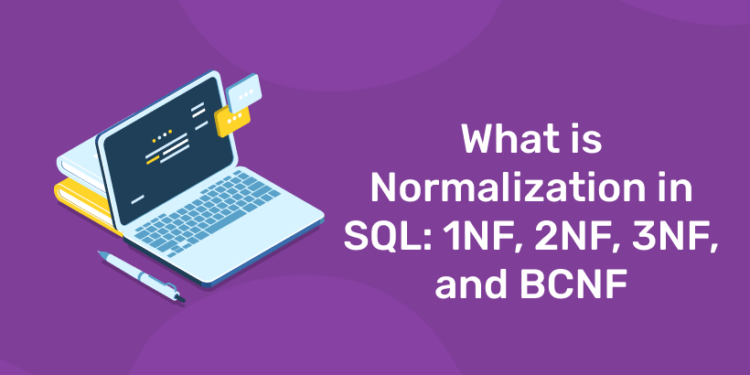When maintaining, using, or modifying relational databases and carrying out various activities, SQL is a useful standardized programming language. The International Organization for Standardization (ISO) and American National Standards Institute adopted SQL as a standard in 1986. (ANSI). The advantages of SQL have been frequently utilized over time by developers creating data integration scripts, database administrators, and data analysts trying to run and set up analytical queries. This is because SQL enables them to carry out operations like data retrieval, database creation, and data inserting, updating, and deletion.
Learn Coding from experts. Join Entri now
Structured Query Language, also known as SQL, is a computer language with a wide range of capabilities and functionalities. In the 1970s at IBM, Raymond FF Boyce and Donald D. Chamberline created SQL under the moniker SEQUEL. It was intended to manipulate and access data held in IBM’s initial quasi-relational DBMS. When Relational Software for VAX systems released SQL in June 1979, it became the first commercial application of SQL. Today’s language is capable of updating, deleting, and introducing data using a relational database management system. The fact that SQL is user-friendly and simple to comprehend is one of the reasons it is well-liked and frequently utilized. Its designers made it simpler to access data immediately wherever it is kept rather than copying the data to other applications while keeping SQL’s usage similar to that of the English language.
Normalization in SQL
As a SQL developer, you frequently deal with massive volumes of data that are kept in various tables that are found in various databases. If the data is not arranged properly, it can be difficult to extract. Data redundancy can be resolved and the data can be arranged in many ways using normalization. The practice of normalization improves data integrity in the table by removing redundant data and duplication. Additionally, normalization aids in database data organization. It takes multiple steps to transform the data into tabular form and eliminate duplicate data from relational tables. Normalization sets the columns and tables of a database in a way that guarantees limits on database integrity carry out their duties. It is a rigorous approach to deconstructing tables to get rid of unused attributes like Insertion, Update, and Deletion anomalies and redundant data. The normal forms of SQL are listed below:
- 1NF (First Normal Form)
- 2NF (Second Normal Form)
- 3NF (Third Normal Form)
- BCNF (Boyce-Codd Normal Form)
The stages that normalization passes through are referred to as normal forms. Interpersonal relationships are governed by traditional forms. A relation is said to be in a specific normal form if restrictions are satisfied.Let us peek into these in detail:
- 1NF (First Normal Form)
The core standards for maintaining your database’s proper organization are established by this first set of rules. This Normal Form addresses the atomicity issue. Atomicity here denotes that the values in the table shouldn’t be subdivided further. Simply said, one cell cannot contain more than one value. A table breaks the First Normal Form if it has a composite or multivalued attribute. The first normal form demands that a table meet criteria such as the absence of ordered rows and columns, the presence of duplicate data, the requirement that row-and-column intersections always have a unique value, and the requirement that all columns be “regular” with no hidden values.
-
- Delete any data groupings that are repeated (Avoid duplicate columns or rows inside the same table, for example)
- For each collection of linked data, distinct tables should be created.
- Every table needs a primary key(That is, a field that assigns each row a non-null, distinct value)
- 2NF (Second Normal Form)
This subsequent set of guidelines expands on those in 1NF. The table must appear in the first NF as the first requirement in the second NF. Partial dependencies should not be present in the table either. In this case, partial dependency means that a non-prime attribute is determined by the right subset of the candidate key. If every characteristic of an entity depends on the entire primary key, it is said to be in a second normal form. This implies that there is a reliance between the values in the various columns. The table needs to be in 1 NF and all of its non-key columns need to be dependent on the PRIMARY KEY. Partial dependencies are eliminated and put in their table.
-
- Meeting all 1NF requirements
- Remove information that isn’t dependent on the primary key in the table (either move the data to the appropriate table or create a new table and primary key)Table relationships are identified via foreign keys.
- 3NF (Third Normal Form)
These guidelines go a step further than those in 1NF and 2NF. The previous rule still holds; the table must be in 2NF before moving to 3NF. The absence of transitive reliance on non-prime properties is the second requirement. Accordingly, non-prime qualities in a particular table that do not serve as a candidate key shouldn’t be dependent on other non-prime attributes. Therefore, a transitive dependency is a functional dependency in which X Z (X causes Z) indirectly, as a result of X Y and Y Z (where it is not true that Y X)
-
- Follow each guideline from 1NF and 2NF
- Remove any attributes or columns that depend on other attributes or columns that aren’t foreign or primary keys.
- BCNF (Boyce-Codd Normal Form)
This also goes by the name 3.5 NF. It was created by Raymond F. Boyce and Edgar F. Codd as a more advanced version of 3NF to address specific anomalies that 3NF did not cover. The table needs to satisfy the third normal form before moving on to BCNF. Every functional dependency A B in BCNF requires that A serve as the table’s Super Key. This normal form, commonly referred to as 3.5NF, is the extended form of 3NF. It was created by Raymond F. Boyce and Edgar F. Codd, who described several anomalies that weren’t covered by the 3NF standard, including Insertion, Deletion, and Update anomalies.
Entri Elevate gives you the best coding courses. Join now
Wrapping up
Knowing relational ideas, the necessity of numerous tables in database design structures, and how to query multiple tables in a relational environment are all aided by having a fundamental understanding of database normalization. It occurs far more frequently in cases similar to data warehousing, where you will presumably work on a procedure to de-normalize the data. Querying denormalized data is far more efficient than querying normalized data.










